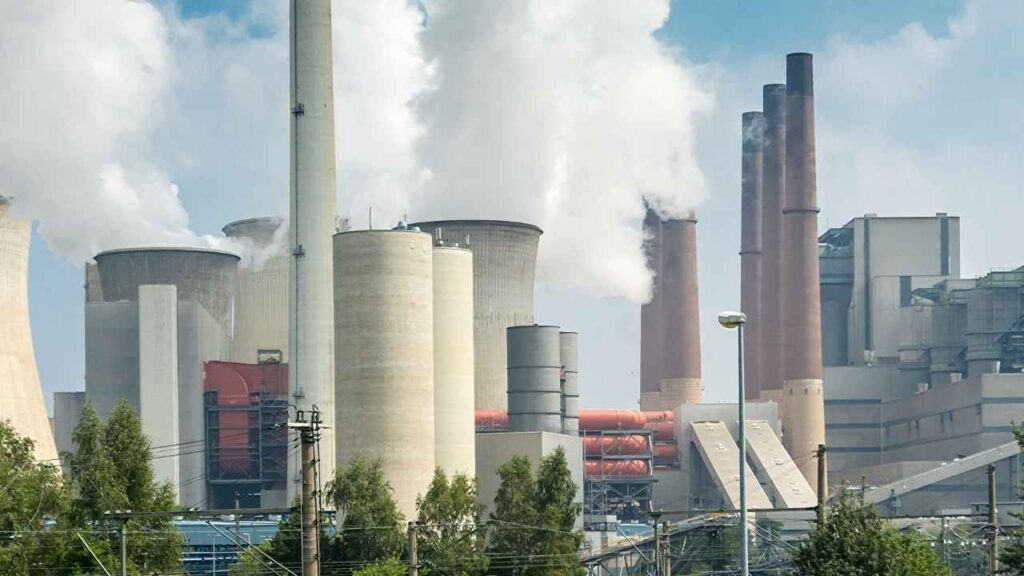Based on the emissions inventory, Brazil can define more effective pathways for climate transition
When we talk about a greenhouse gas (GHG) emissions inventory, we are referring to a systematic assessment that quantifies these emissions. In some cases, in addition to emissions, the inventory also accounts for the removal of GHGs from the atmosphere. These emissions and/or removals result from human activities within a given territory, sector, or organization. Officially, they are quantified over a specific period, which typically corresponds to one year.
The GHG emissions inventory is an integral part of Brazil’s National Communication to the United Nations Framework Convention on Climate Change (UNFCCC). This communication refers to an official report periodically submitted by countries that are parties to the UNFCCC.
Understanding this process is essential to keeping track of global climate commitments.
So, what is a greenhouse gas emissions inventory for?
The emissions inventory is considered a key tool for transparency and for monitoring the climate targets set under the UNFCCC. It allows tracking of progress toward emission reduction goals established by the Paris Agreement. For this reason, the inventory also serves as a basis for the development of climate-related public policies.
Therefore, the inventory is essential for:
• Monitoring the climate impact of human activities;
• Demonstrating transparency and environmental responsibility (for companies, governments, universities, etc.);
• Identifying opportunities to reduce emissions;
• Planning public policies and mitigation actions;
• Meeting international commitments, such as the Paris Agreement.
Developing and updating GHG emissions inventories strengthens the knowledge base needed for more effective decision-making. In addition, it guides mitigation strategies aligned with global targets and contributes to a more sustainable and responsible development pathway.
“Inventories are key elements in the development of public policies — they are, in fact, the basis of the Climate Plan currently under development. In addition to the public sector, other stakeholders, such as the productive sector, have also sought this information to plan actions and meet their own demands.”
(Stoécio Malta Ferreira Maia, professor at IFAL and scientific member of CCARBON/USP)
What is measured in an emissions inventory?
The inventory primarily considers the following GHGs:
• Carbon dioxide (CO₂) – the main gas released by the burning of fossil fuels;
• Methane (CH₄) – mainly associated with livestock farming, irrigated rice cultivation, and waste management;
• Nitrous oxide (N₂O) – primarily emitted by agricultural activities;
• Industrial gases – such as HFCs, PFCs, and SF₆, used in industrial processes and refrigeration systems.
Understanding the main gases measured in the inventory helps guide control efforts in strategic sectors. This knowledge also allows for more targeted and effective mitigation actions.
How is a greenhouse gas emission inventory developed?
GHG emissions inventories follow standardized methodologies developed by the Intergovernmental Panel on Climate Change (IPCC). The goal is to provide detailed estimates of emissions and removals of these gases by source and by sector. These sectors include energy, agriculture, industrial processes, waste, and land use.
The process involves several steps. First, emission sources are identified, such as transportation, energy consumption, agriculture, waste, and industrial activities. Then, the so-called “activity data” is collected. This refers to the volume or intensity of each activity — for example, the amount of diesel consumed or the number of livestock.
Once this data is gathered, an “emission factor” is applied. This factor estimates how much GHG is released per unit of activity — such as kilograms of CO₂ per liter of fuel. From there, total emissions are calculated. Finally, all information is recorded and goes through verification processes to ensure transparency and data quality.
Examples of greenhouse gas emissions inventories
There are different types of emissions inventories, which vary depending on scale and who is responsible for developing them:
- National Emissions Inventory: prepared by the Brazilian government and periodically published in the National Communication to the UN. This inventory accounts for emissions across the entire country and helps track Brazil’s progress toward international climate targets.
- State and municipal inventories: several Brazilian states and cities also develop their own inventories to identify and manage emissions within their territories. These documents help guide local public policies and targeted environmental strategies.
- Corporate inventories: companies produce their own inventories to measure GHG emissions, especially those committed to sustainability. These inventories are often published in sustainability reports, promoting transparency and environmental responsibility in the private sector.
Global Greenhouse Gas Emissions Overview
According to the Emissions Database for Global Atmospheric Research (EDGAR), GHG emissions have been steadily increasing since the beginning of the 21st century. This rise has been driven mainly by fossil CO₂ emissions from China, India, and other emerging economies. The report states that in 2023, global GHG emissions increased by 1.9% compared to 2022, reaching 53.0 Gt CO₂eq. Fossil CO₂ accounted for 73.7% of the total, followed by CH₄ (18.9%), N₂O (4.7%), and fluorinated gases (2.7%).
Since 1990, fossil CO₂ emissions have grown by 72.1%, while CH₄ and N₂O have increased by 28.2% and 32.4%, respectively. Fluorinated gases have quadrupled (+294%).
In 2023, the largest global GHG emitters were China, the United States, India, the European Union and its 27 Member States (EU27), Russia, and Brazil. Together, these countries accounted for 62.7% of global emissions. Among them, China, India, Russia, and Brazil increased their emissions compared to 2022. India stood out with the highest proportional increase (+6.1%), while China had the largest absolute increase (+784 Mt CO₂eq).
On the other hand, the EU27 reduced its emissions by 7.5% in 2023, reaching a volume 33.9% lower than in 1990. Of the 17 countries that each emit more than 1% of global GHGs, six reduced their emissions in 2023: the U.S., EU27, Japan, South Korea, Germany, and Pakistan.
GHG Emissions Profile in Brazil
The 4th National Communication (NC), published in 2020, indicated that the main sources of emissions in Brazil are agriculture and livestock, energy, and land-use change. The energy sector’s share is mainly due to the burning of fossil fuels in transportation and industry. Industrial processes and waste sectors account for smaller but important portions for monitoring and targeted mitigation strategies.
In addition to the NC, Brazil publishes GHG emissions and removals estimates every two years, with the latest report released in 2022. The report showed that agriculture and livestock contribute 38.0%, the energy sector 28.5%, and land-use change 23.2% of the country’s total emissions.
___
KNOW MORE!
Brazilian GHG emissions in the agricultural sector predominantly result from enteric fermentation in ruminants, which is the main source of methane (CH₄). This activity accounts for over 90% of methane emissions in agriculture. Manure management also contributes to CH₄ and N₂O emissions. Irrigated rice cultivation emits both gases due to flooded conditions that favor the activity of methanogenic microorganisms.
Other significant sources of N₂O are linked to the use of synthetic and organic fertilizers, soil management practices, nitrogen mineralization, and the decomposition of agricultural residues. CO₂ emissions in this sector are smaller, with notable contributions from the application of urea and lime. These data reveal the complexity of agricultural emission sources in Brazil and highlight the need for differentiated strategies to mitigate the sector’s climate impacts.
Rethinking Development: Reflections on Climate Change
In the face of climate change, the concepts of progress and development in agriculture need to be revisited. While in the past the goal was to expand agricultural frontiers, today the challenge is to produce more with less environmental impact.
Restoring already cleared areas and adopting practices that regenerate ecosystems are promising ways to increase productivity and promote carbon sequestration. Good livestock farming practices and the adoption of integrated systems (such as Crop-Livestock-Forest Integration, ILPF) can substantially contribute to reducing GHG emissions.
For this transformation to be effective, it is essential to support producers with technical assistance, credit, and access to innovation. Additionally, it is important that Brazil continues improving its emissions estimates and strengthening reporting and communication systems. This ensures greater transparency and credibility in climate commitments. By integrating these actions, Brazilian agriculture can become a leader in a new development model — one that is more resilient, regenerative, and aligned with current challenges.
References
EDGAR (2024) – Global GHG Emissions of All World Countries: levantamento global atualizado com dados até 2023, detalhando emissões por país, setor e gás. Available at: arxiv.orgessd.copernicus.org+5edgar.jrc.ec.europa.eu+5reddit.com+5 Accessed on: 24 jun. 2025.
Ministério da Ciência, Tecnologia e Inovação. Estimativas Anuais de Emissões de Gases de Efeito Estufa. Available at: https://www.gov.br/mcti/pt-br/acompanhe-o-mcti/sirene/publicacoes/estimativas-anuais-de-emissoes-gee Accessed on: 03 jul. 2025.
Ministério da Ciência, Tecnologia e Inovação. Comunicações Nacionais do Brasil à UNFCCC. Available at: https://www.gov.br/mcti/pt-br/acompanhe-o-mcti/sirene/publicacoes/comunicacoes-nacionais-do-brasil-a-unfccc Accessed on: 03 jul. 2025.
By: Juliana Ramiro, CCARBON/USP
How to cite this article:
Ramiro, J. The Role of the Greenhouse Gas Emissions Inventory in Brazil. CCARBON/USP, 2025. Available at: <LINK>. Accessed on: DATE





